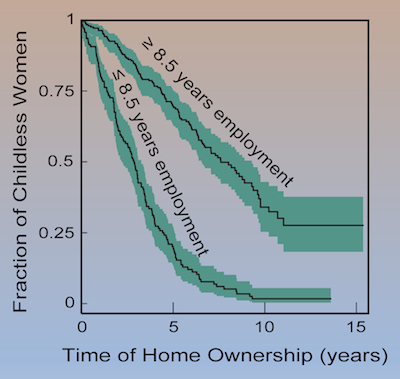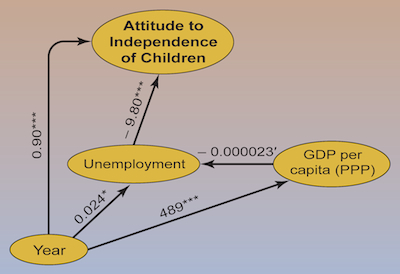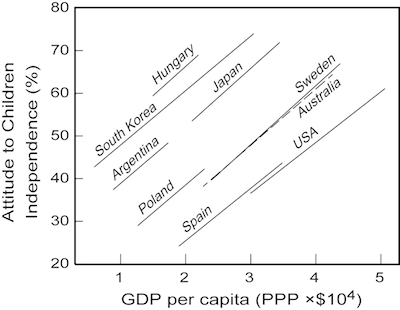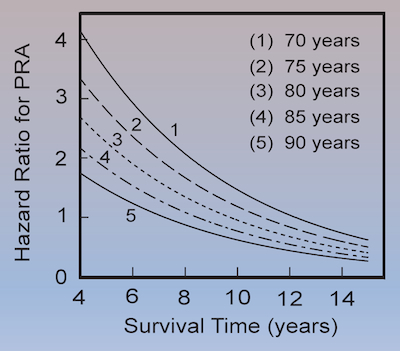Population health, epidemiology, and population studies are the areas of our particular expertise. We will be happy to provide you with our expert advice and statistical support in your projects in epidemiology and human health, diet and obesity, lifestyle and sporting activities, demographic studies and evaluations, healthy ageing and life expectancy, etc.
Some of the selected examples of projects undertaken by our members are discussed below.
Home Ownership and Child Births
 This was a cohort study aimed at investigating the dependences of timing of the first child birth on such socio-economic parameters as time of exposure to home ownership prior to the child birth, age, level of education, and prior stable relationship. The statistical methodology was based on the survival analysis with episode splitting corresponding to the commencement of home ownership.
This was a cohort study aimed at investigating the dependences of timing of the first child birth on such socio-economic parameters as time of exposure to home ownership prior to the child birth, age, level of education, and prior stable relationship. The statistical methodology was based on the survival analysis with episode splitting corresponding to the commencement of home ownership.
The greatest impact of home ownership on childbirths was found to occur at the age of around 30 years. Women owning their homes and having had longer periods of employment (≥ 8.5 years) had significantly lower rates of first child births compared to women with smaller periods of employment (Figure on the left). Stable relationship was another significant variable for childbirth rates, whereas education was not a significant factor within the considered sample. Two distinct maximums of increased birth rates were shown to occur at around 6 years and at around 9-10 years from the commencement of home ownership.
The methodology used in this project will be essential for a number of different scenarios and projects where conditions for an occurring event under investigation (such as, for example, the event of the first child birth in this project) abruptly change after the occurrence of another event (like attained home ownership).
Attitude to Independence of Children

Attitudes to independence of children (percentages of those who expect children to be independent) was studied using mixed effects modelling in several different countries as functions of GDP per capita, unemployment rates, and time (in years) between 1982 and 2013.
The rate of changing attitude to independence of children appeared to be practically independent of country (Figure on the left). However, the attitude itself can be significantly different in different countries.  Therefore, there is a significant general world-wide trend of increasing percentage of those who expect children to be independent, although this trend could start from different starting points for different countries.
Therefore, there is a significant general world-wide trend of increasing percentage of those who expect children to be independent, although this trend could start from different starting points for different countries.
The structural equation modelling was used to study any direct and indirect effects of unemployment, GDP and time on attitudes towards independence of children (Figure on the right). The conducted analysis highlighted distinctions between the direct and indirect effects of time on changing perception towards children independence in the modern world, which provides significant new insights into the mechanisms of modern social and cultural developments.
Perceived Rate of Ageing - Biomarker of Survival
 This project used the data from the Longitudinal Study of Ageing Danish Twins, which followed a population-based cohort of Danish twins over 70 years of age. The perceived rate of ageing (PRA) was determined from the visual evaluation and comparison of three consecutive photographs of each study participant in years 2001, 2003 and 2005. From this comparison, average PRA was estimated by several independent qualified raters. The predictor variables were the age at the time when the first photograph was taken, gender, and the average PRA.
This project used the data from the Longitudinal Study of Ageing Danish Twins, which followed a population-based cohort of Danish twins over 70 years of age. The perceived rate of ageing (PRA) was determined from the visual evaluation and comparison of three consecutive photographs of each study participant in years 2001, 2003 and 2005. From this comparison, average PRA was estimated by several independent qualified raters. The predictor variables were the age at the time when the first photograph was taken, gender, and the average PRA.
The determination of the probability of death at any particular moment of time and evaluation of the effects of the predictor variables on the survival time was conducted using the survival analysis (Cox regression). The consideration of twins enabled significantly better contrast for comparisons between the effects of PRA within the twin pairs.
The hazard ratio for PRA (which was the ratio of probabilities of dying at any moment of time upon increasing of PRA by 1) was shown to vary from 0.70 for 'very slow' PRA to 2.19 for 'very rapid' PRA. This demonstrated strongly non-linear effect of PRA on survival, with significantly accelerated increase of the probability of death with increasing PRA. The effect of increasing age was to reduce the hazard ratio for PRA from about 2.2 for 73 years to about 1.2 for 95 years. Therefore, PRA appears to be a better biomarker of survival at smaller age (within the considered sample).
This project demonstrates our significant expertise in survival analysis with multiple covariates.

